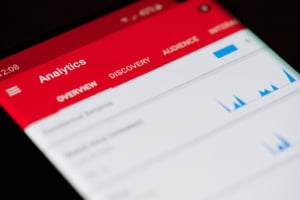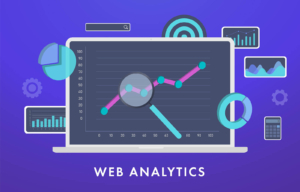Universal Analytics & Google Analytics 4: Understanding Key Differences
Google and the tools used to track essential website metrics have evolved a lot over the years, and one of the biggest upcoming transitions will take place on July 1st, 2023. That change is the discontinuing of Universal Analytics and migration to exclusive use of Google Analytics 4 for all Google Analytics properties. This may sound Greek to you. But, today we are going to be talking about some of the key differences between the two, and what you need to understand before this transition.
Data Collection Changes
 Historically, Universal Analytics has used a session-based data model that makes use of different “hit types.”
Historically, Universal Analytics has used a session-based data model that makes use of different “hit types.”
Google defines hits as “an interaction that results in data being sent to Analytics.” There are a variety of hit types, such as social interactions, a user loading a new page, or clicking on a link. Google reports these interactions by breaking them down into categories, actions, and labels. Universal Analytics collects and processes data based on the number of sessions on your site. Due to how the data is collected, the same person may visit the site more than once, but it will count as multiple sessions, even though it’s just one person visiting your site multiple times. As a result, tracking sessions can sometimes report less accurate data in terms of understanding how many users are actually viewing your site.
Understanding Categories, Actions, and Labels
Universal Analytics reports different kinds of events on your site by breaking them down in a way that separates them into different categories, actions, and labels. Because of this, it can become difficult for the average user to understand how to track the correct categories, actions, and labels so they can capture the specific data they want from their site. An example of this could include a clinician wishing to track every time a visitor clicks on the “contact” button, or visits their scheduling page. Generally, more technical knowledge is required to create triggers to get the data you want since these are not automatically captured by Universal Analytics.
Google Analytics 4, everything is an event
As previously mentioned, of the biggest changes in how Google Analytics 4 approaches capturing data. Google Analytics 4 uses machine learning and automated data collection. It also uses a different model from Universal Analytics that is centered around events rather than sessions. Everything is seen as an event; every page view, every time a person loads up a new page, every click on a link, etc. By transitioning to this approach, things become a bit more streamlined when tracking important data, and setting up other triggers to track additional events. Instead of having to remember each category, action, and label for each event you want to track, there are now four main types of events that can be tracked within Google Analytics.
The first set of events is automatically collected events
These are events that are automatically recorded by GA4 once they occur on your site. These events may include:
- When users click on an ad
- Loading up a new page
- Starting a new brand new session on the site
- Users the bottom of the page for the first time
- A variety of other collected events.
The second type of event is enhanced measurements
 These are measurements for more specific things you want to track on your site. This could include events like when someone downloads a file from your site. Or, clicks on an external link leading to another site. With Universal Analytics, only page views were tracked originally, and capturing other important events would be something that must be set up using categories, actions, and labels. But with GA4, this process is automatic, so you don’t have to worry about setting it up yourself! You can simply choose to enable Enhanced Measurement when creating a data stream (which we will get to in just a bit).
These are measurements for more specific things you want to track on your site. This could include events like when someone downloads a file from your site. Or, clicks on an external link leading to another site. With Universal Analytics, only page views were tracked originally, and capturing other important events would be something that must be set up using categories, actions, and labels. But with GA4, this process is automatic, so you don’t have to worry about setting it up yourself! You can simply choose to enable Enhanced Measurement when creating a data stream (which we will get to in just a bit).
Next, we have recommended events
Events of this type are those that Google suggests you implement on your site. Events like these often need a bit more background information to implement fully, which is why they are recommended by google instead of automatically recorded. Adding these can provide additional features and extra data on reports. Google will offer a predefined name for specific events that are common, such as when a user submits a form or requests information. In this case, Google would likely recommend setting up an event that is titled “generate_lead.”
Finally, we have custom events
These are events that you define. This means that you must set up the parameters to collect information yourself. As a result, it can be a bit harder to implement properly. These types of events won’t usually show up in most standard Google Analytics reports, so you will need to take a few extra steps to set up custom reports with this data.
Data Tracking Changes
Both Universal Analytics and Google Analytics 4 use properties. Properties are websites, mobile apps, blogs, etc. with a unique tracking ID. For both UA and GA4, you will have to add this unique id in order to start tracking data on your site. But, tracking the data will differ for each. With Universal Analytics, data is tracked using a “view”, which is a set of specifications for tracking traffic on your site. You can set up multiple views in order to filter out data, track certain data, or set up different goals.
Google Analytics 4: Goodbye views, hello data streams
Unlike views in Universal Analytics, Google Analytics 4 uses data streams. Views are no longer used in GA4, which means you can’t create new views to filter your data. Instead, data streams are used to allow you to collect data from multiple sources in the same property. Unlike in Universal Analytics where you would have to have multiple properties to track data from your site and a companion app, you can instead create data streams for both your site and app to track each of them on the same property. For most private practice owners, you likely won’t have to worry about including apps with Google Analytics. But, it is still worth knowing how things are changing between UA and GA4.
Data Metric Changes
Finally, we are going to address how metrics have changed between UA and GA4. In Universal Analytics, you are likely familiar with the metrics “bounce rate”, “pages per session”, and “average session duration”. Bounce rate is the rate at which people only visit one page of your site before ‘bouncing’ off your site. Since GA4 has moved away from a model centered around sessions and page views, these metrics haven’t been available until recently. Instead, new metrics have been implemented to track how engaged users are with your site.
 The new metrics used with GA4 won’t show you data like how long someone is staying on your site. Instead, these metrics aim to focus on how engaged users are with your site. One of the main metrics is “engaged sessions”, which are the number of sessions that:
The new metrics used with GA4 won’t show you data like how long someone is staying on your site. Instead, these metrics aim to focus on how engaged users are with your site. One of the main metrics is “engaged sessions”, which are the number of sessions that:
- Have lasted longer than 10 seconds,
- Have a conversion,
- Or have had 2 or more screen/page views
Other related metrics include “engaged sessions per user,” “engagement rate”, and shift the focus from “how fast are people leaving my site” to “how long are people staying on the site”. In essence, the engagement rate is essentially the inverse of the bounce rate. But, it can still tell us vital info about how engaged people are with your site. using
Why these changes matter
The upcoming migration to Google Analytics 4 isn’t something that can be avoided. As a result, SEO specialists and therapists alike must understand how things are changing to accurately collect, track, and report site data. Taking the time to understand how to adapt to the new processes implemented in Google Analytics 4 will be vital in continuing to keep track of important data. Our team is here to offer support during this transition.
Begin Improving Private Practice SEO with Simplified SEO Consulting
Our team is preparing for the upcoming transition, and honing in on the data we need to focus on most. By doing so, we hope to ensure we are providing the best insights for our clients. We would be happy to offer support in cultivating your site’s SEO and helping you get to the first page of Google. To start your journey with Simplified SEO Consulting, please follow these simple steps:
- Apply to work with Simplified SEO Consulting
- Meet with an SEO specialist
- Begin SEO services for therapists
Other Services Offered with Simplified SEO Consulting
SEO is an ever-changing field. This is why we are happy to offer a number of services in support of your private practice. We are happy to offer support with our Done For You SEO Services and DIY Online SEO Courses. We also offer a 12-week Done With You Intensive SEO Program as well. Please visit our blog to read other informative posts today!
About the Author

Sterling Humburg-Cage graduated from the University of Missouri with a BA in Psychology in 2020. He integrates what he learned in school into his work as an SEO Specialist with Simplified SEO Consulting. Sterling prides himself on helping current clients & alumni problems solve difficult SEO issues. He’s great at giving clients multiple options about how to approach a situation. And, responding in a timely manner to client concerns. Since he started, Sterling has met frequently with our alumni and provided them extra problem-solving support. He now provides additional support with a variety of local SEO services. He often goes the extra mile to do outside research. By doing so, he sure private practice owners have everything they need to rank well on search engines long term for the keywords their ideal clients are using!




Leave a Reply
Want to join the discussion?Feel free to contribute!